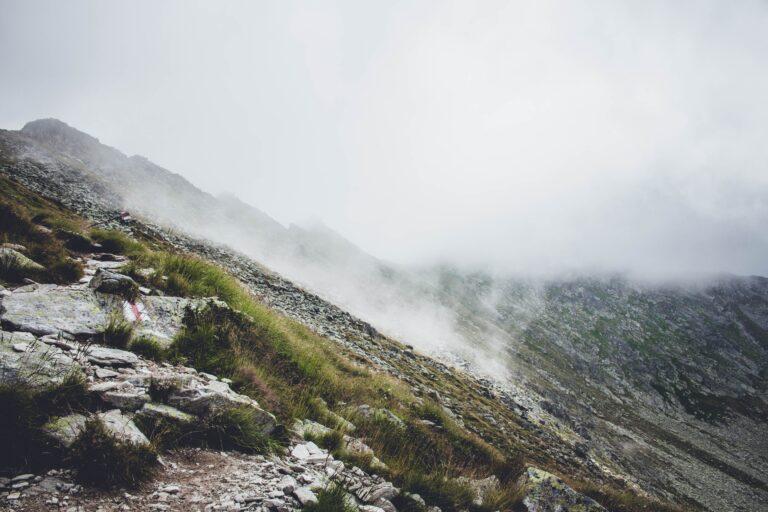Basic Trekking Terminologies
New to the world of trekking? It is completely normal to have a hazy understanding of the technical terms associated with it. While venturing into the roughest of terrains, revealing itself through the grandeur of nature, Kashti Adventures believes that it is important to have a clear glossary of the fundamental terminologies. The first treks are filled with uncertainty and fear of the unknown. So here’s a list of words that’ll help you on your next trek.

Pass or 'La'
A pass is a connecting corridor that exists between two adjacent mountains. Since ancient times mountains are one of the significant barriers that have stood unshaken amidst the historical trading routes. The mountain passes have been providing the navigating routes for these pathways. A pass forms naturally as a result of erosion. It uses other geological components like the saddle (the highest point between adjacent mountains). A pass is also characterized by its general steep slope, below which it is quite common to get a glimpse of river drainage basins.
Scree
While trekking steep slopes, loose bits of rocks are a headache! These are called Scree. The term has the Old Norse origin ‘Skrida’, which is synonymous with landslides. In other words, these are fragmented bits of rocks that drop and accumulate below the slope, as a result of gravitational pull. The scree that had been accumulated is termed as Talus. It is most common to find and experience scree at high-altitude valleys, or adjacent to mountain rivers. It is not to be mistaken with Colluvium which is the surface run-off of rocks that occurs due to rain, sheet wash, or gentle slopes. On the other hand, scree forms due to weathering and erosion that leads to slope degradation.
Cairn
While treading through the Himalayas, it is common to have a glimpse of mysterious stacks of rocks. These rocks are arranged one on top of the other, usually in a pyramid-like shape. These man-made stacks of rocks are called Cairns. Since times immemorial, Cairns have been used as places of worship, or as a sign of reverence for holy burials. Nowadays, the Cairns generally seen on the trails are made as a landmark. It is an assurance that the trekker is on the right trail and the summit is not far enough!
Anchor
While climbing steep rocks and mountains, it becomes quite difficult to balance the whole weight of a rope. An anchor helps fix a string with diverse natural resources like trees, crevices of rocks, snow, and many more. The grip of an anchor is secure enough to balance almost any object (as far as it doesn’t exceed the specifications of the rope) on itself and keeps it safe and sturdy.

Base Camp
Every trek comes with its own difficulties. Before climbing a summit, trekkers generally rest for a day or two and plan for successive steps. This staged place is usually at the base of a mountain and is called a base camp. This small zone is usually outside the avalanche reach of the surrounding valley and provides relative safety to the trekkers. An Advanced-base camp is a similar area but the difference lies in the journey that leads to it. To reach an advanced base camp, a trekker has to go through potentially dangerous terrain whereas, for a usual base camp the trek to base camps is quite accessible.
Tarn
Hills and mountains are filled with ridges and unevenness. These distortions are sometimes projected inwards or outwards. Most of the mountains and hills have inert depressions that get filled with the monsoon rainwaters converting them into small pools called tarns. It maintains the local ecosystem by sustaining biodiversity in and around it.
Benightment
Trekkers and mountaineers are always ready for unforeseen hurdles in their journey. These hurdles may be due to physical injuries, losing one’s way, or many other reasons. The trekker, as a result, may get stuck on a climb overnight. This is called Benightment. Every trekker should ensure that such situations are avoided with necessary arrangements of prior precautions.

Conclusion
Having an essential glossary is a plus for every trekker. It ensures a hassle-free trekking experience. So, for your next trek keep a bunch of words ready so that you are able to communicate effectively with your fellow trekkers and enjoy its essence completely!
Blog by Chandrajita Chakraborty
Quick Links
Information
Contact Info
- Bhuntar, Kullu
- Dwarka, New Delhi
- +91 9971355865
- info@kashtiadventures.com
In a Nut shell
Certified by MSME, Govt. of India, we are a 5 star rating company making golden efforts to beautify travellers experience.
Kashti Adventures. Developed By Digital webster
Copyright © 2021. All rights reserved.
Book my trip
